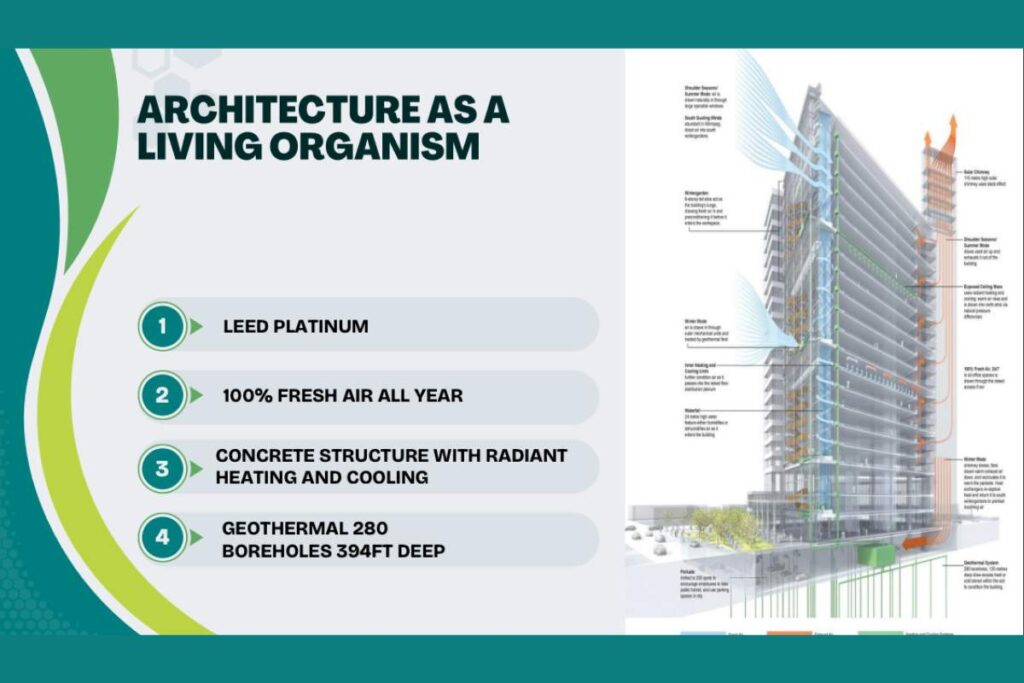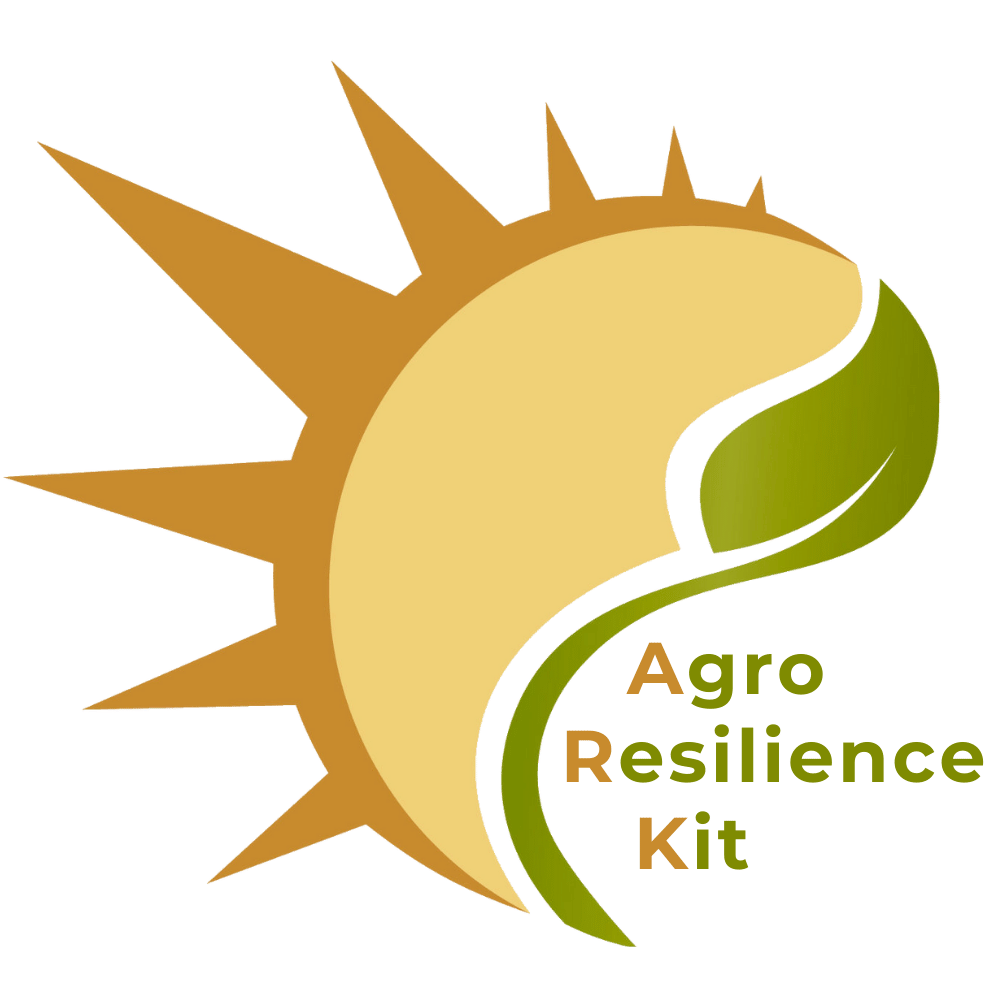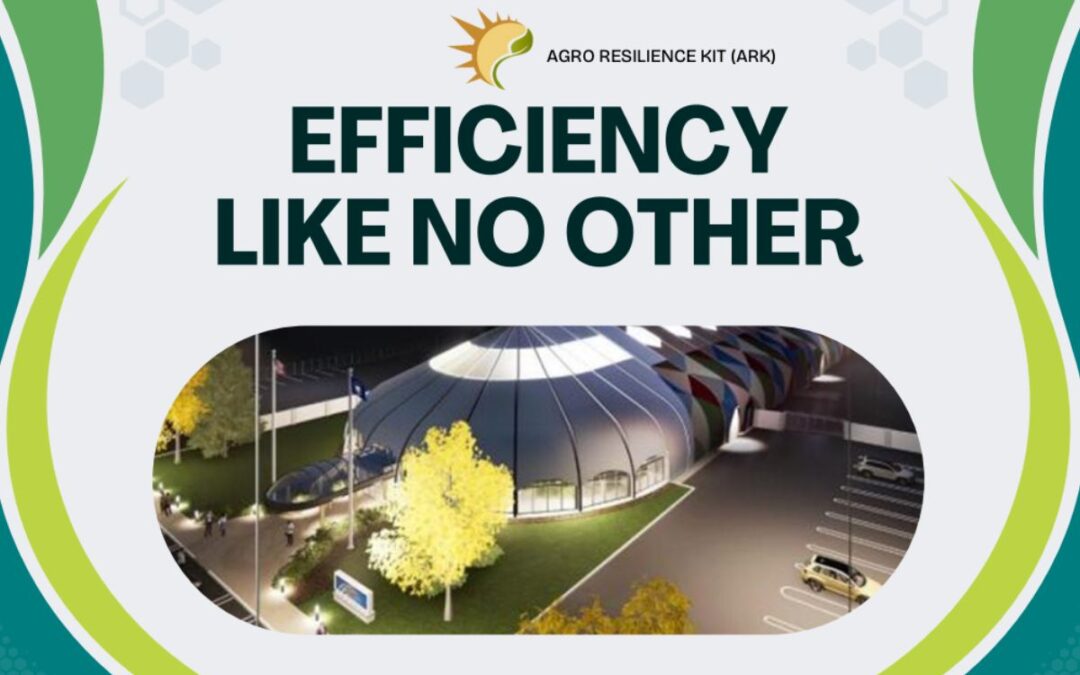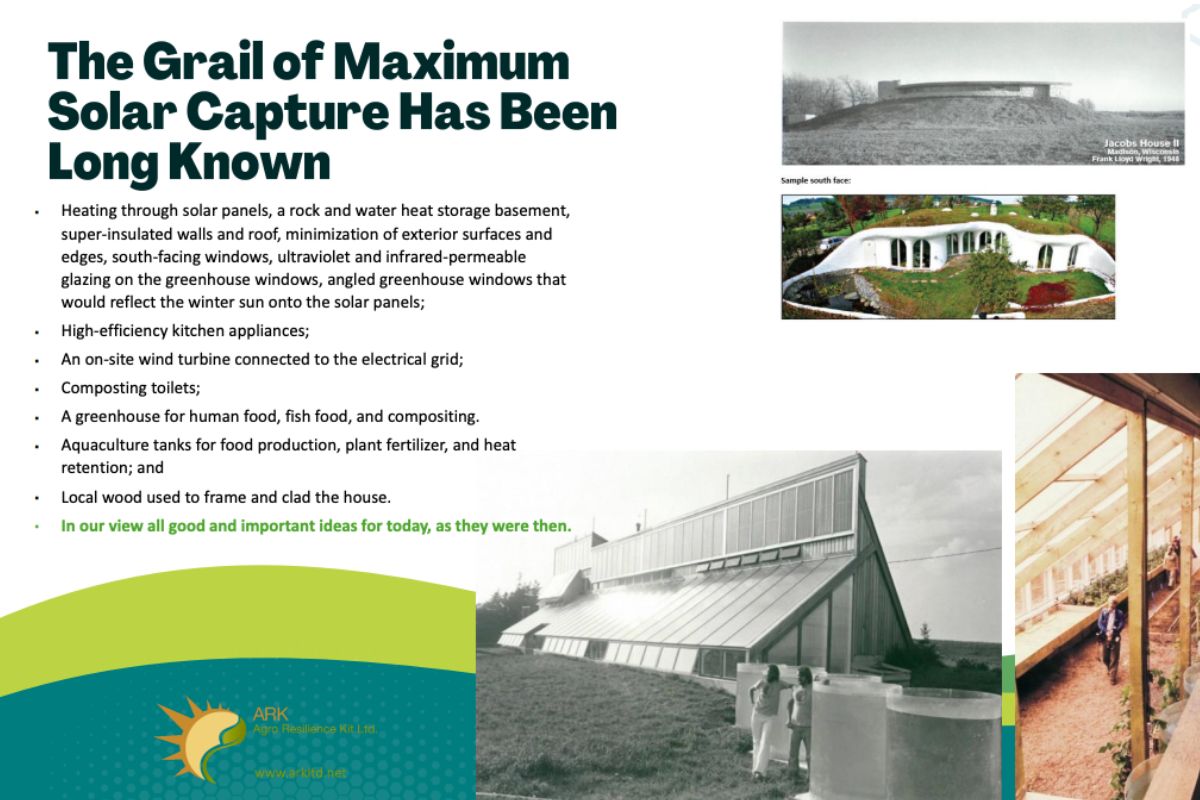As food insecurity, and energy costs escalate, communities are looking for new ways to take back control—starting with how they grow food. Community farming has long been a symbol of resilience, but when combined with sustainable architecture, it can become a true engine for self-sufficiency, a positive circular economy as well as energy savings, and energy self sufficiency.
At Agro Resilience Kit (ARK)., we’re building on decades of architectural, engineering wisdom and modern innovation to show how passive energy management with greenhouse technologies can be smarter, stronger, and more sustainable than ever before.
A New Era — Powered by Passive Solar Design
Passive solar design principles—used as far back as ancient Greece—are now more relevant than ever. South-facing windows, thermal mass for heat storage, and earth-insulated structures can drastically cut energy consumption.
We’ve seen these principles work across time and geography. From the sun-warmed courtyards of Athens to the PEI Ark in 1970s Canada, these methods have stood the test of time. Today, ARK’s passive design strategies include:
- Southern building orientation to capture winter sunlight
- Thermal mass (like rock or water tanks) to store heat
- Underground insulation and geothermal exchange systems
- Clear High-performance membranes that retain heat while allowing light in
These elements allow our buildings to maintain optimal temperatures and conditions—even in Canadian winters—with little to no supplemental heating. In fact, one passive solar greenhouse tested in Manitoba achieved a 30°C interior temperature difference during February without any fossil fuel input.
Water Conservation & Closed-Loop Systems
In community farms, sustainability isn’t just about energy—it’s about resource cycling. Our Agro Resilience Kit integrates intelligent water use systems that conserve and reuse vital resources:
- Rainwater harvesting and greywater recycling for irrigation
- Composting that reduce waste and return nutrients to the soil
- Aquaponics tanks that produce fish, vegetables, and natural fertilizer in one loop
These closed-loop systems mirror nature, reducing the farm’s ecological footprint and allowing communities to operate independently—even in remote or drought-prone regions.
Renewable Energy That Actually Works
Where typical greenhouses rely on fossil fuels, ARK structures capture and store solar energy with industry-leading efficiency. Through our partnership with Sprung Structures, we offer:
- Clear membranes that trap up to 96% of thermal radiation with only 2% air exchange
- Concentrated solar systems that convert sunlight into hot water at over 70% efficiency—compared to just 23% for solar PV
- Thermal battery storage using insulated water tanks
- Geothermal tubing that balances internal temperatures year-round
This isn’t just green energy—it’s smart, affordable, and resilient energy. The result is dramatically lower operational costs and long-term independence from volatile energy markets.
Real-World Example: Greenhouse in the Snow
Perhaps one of the most inspiring stories comes from Alliance, Nebraska, where Russ Finch built a citrus-producing greenhouse that runs almost entirely off geothermal heat. Using just a fan and buried earth / air tubes, his “Greenhouse in the Snow” keeps citrus trees thriving in harsh winters—for around $1 per day in energy costs.
Finch’s innovation proves that we don’t need expensive tech or complex systems to grow food year-round. We just need to return to the wisdom of working with nature—and ARK’s systems take those principles to a scalable level.
Do These Solutions Scale?

Absolutely. Let’s look at the numbers:
- Manitoba Hydro’s HQ, a 22-storey LEED Platinum building in Winnipeg, has slashed its energy use by 70% through passive and geothermal design.
- China has built over 1.8 million acres of passive solar greenhouses, supported by government incentives.
- Sprung Structures offer unparalleled energy efficiency and durability in extreme climates, making them a scalable solution for cold regions around the world.
ARK’s clear membrane technology not only matches these successes—it exceeds them in air tightness, speed of installation, and solar heat capture. That translates into faster builds, lower emissions, and greater insurance eligibility compared to traditional glass greenhouses or polyethylene greenhouse structures.
Community Impact: Food, Skills, and Self-Sufficiency
When sustainable design meets community farming, the impact goes beyond food. These spaces can become:
- Educational hubs for climate literacy and ecological living
- Skill-building centers for youth and adults
- Local food supply chains that reduce transportation emissions
- Cultural gathering places rooted in land and stewardship
From rooftops in urban centers to fields in rural towns, Agro Resilience Kit (ARK) greenhouses provide a blueprint for low-carbon, high-impact local development.
Bringing the Vision to Life
At ARK, we’re not just designing structures—we’re designing systems for a better future. With the Agro Resilience Kit, we’ve assembled all the best-practice components and technology suppliers needed to transform underutilized spaces into year-round food-producing ecosystems:
- Passive solar architecture
- Geothermal heat and cooling
- Solar hot water capture
- Energy-efficient membranes
- Water conservation systems
- Aquaponics and composting loops
- Biogas and biodiesel options
- And a flexible, scalable design
Together, these elements empower communities to take control of their food systems, reduce carbon footprints, and embrace a regenerative future.
Take the First Step Toward Food Sovereignty
Want to see what’s possible?
👉 Take a virtual tour of our passive solar, aquaponics-ready greenhouse in Alberta, Canada.
👉 Let’s explore how your municipality, community group, or organization can build a resilient farming future.
📩 Reach out to start the conversation.
Sustainable design isn’t just about buildings. It’s about building a better world.


